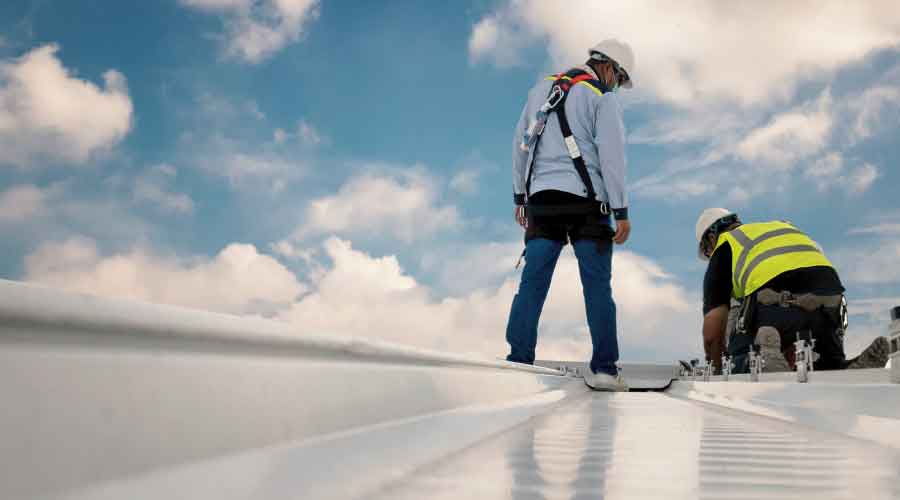Vegetative Roofs Moderate Interior Building Temperatures
Vegetative roofing systems have been around since antiquity. Many cultures have understood the temperature moderation that below-ground enclosures, bermed spaces, and sod roofs provide. These building features remained in use even when modern building materials became available.
Vegetative roofs have attracted greater attention from institutional and commercial facilities in recent years, due to the sustainable construction movement and renewed interest in environmental responsibility. Properly designed, specified, and installed, vegetative roofs can be relatively maintenance-free additions.
Benefit Check
A primary reason maintenance and engineering managers consider installing a vegetative roof assembly is to moderate interior-space temperatures. Vegetative roofing systems keep buildings cooler in the summer and warmer in the winter, which ultimately reduces heating and cooling needs and saves energy and money.
The surface temperature of a vegetative roof remains cooler because of its mass, and evaporative cooling contributes to the lower surface temperature. Vegetative roofs help mitigate the heat-island effect — where heat radiation from dark roofs and paved surfaces raises ambient temperatures in urban centers — by absorbing solar radiation and providing evaporative cooling.
Vegetative roofing also regulates and reduces storm-water runoff during heavy rains. The flow of water into storm-drain systems slows as it passes through the vegetative roof's growing media. One result is fewer overflows onto city streets and into storm drain lines.
This feature also can benefit managers because moderated flow rates lower the risk of drain back-ups and associated leaks that occur when heavy rains overwhelm roof drains. The growing media also retains some of the storm water — some of which evaporates — for plant growth, and the media provides a filtration system for storm water.
Among the additional benefits of vegetative roof systems are the restoration of habitats for insects, the beautification of urban areas, and the promotion of health and healing, especially in health care facilities. Healing is linked to plants because they produce oxygen and a general sense of well-being. Many hospitals have installed roof gardens to promote healing for patients.
Related Topics:














